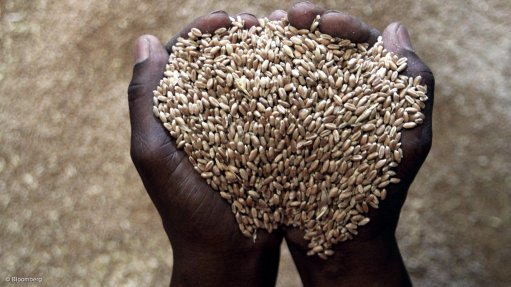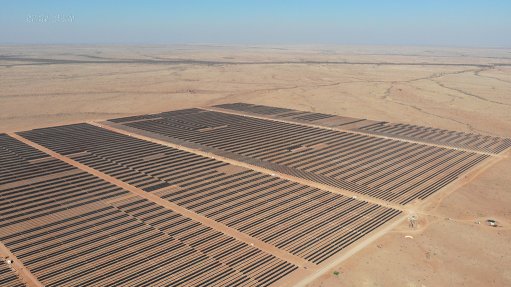Members lament impact of imported products on local industry



JOHN TARBOTON Stainless steel finished product imports grew 44% in 2016 compared with 2015
DECLINING VALUE In South Africa, the stainless steel value chain has declined from R20.9-billion in 2014 to R13.7-billion in 2016
Photo by Bloomberg
In April, the Southern Africa Stainless Steel Development Association (Sassda) conducted a Short Track Survey that gave an account of the state of the stainless steel industry, compared with this time last year, which had Sassda members lamenting the negative impact of imported stainless steel products.
Sassda executive director John Tarboton notes that stainless steel finished product imports grew 44% in 2016, compared with 2015, while finished product exports dropped by 20%.
“This has meant that, in the last year, South Africa has changed from being a net exporter of finished products to a net importer. The overall local market consumption of finished products grew at 2.6% last year, but the change in trade in finished products has meant that the consumption of primary products has dropped by 11%.”
Receiving responses from 83 of its members, Tarboton says, the survey was conducted shortly after the International Stainless Steel Forum (ISSF) reported in March that global stainless steel melt shop production increased by 10.2% year-on-year – in 2016 – to 45.8-million metric tons, compared with 2015.
Despite the positive figures presented by the ISSF in South Africa, the stainless steel value chain has declined from R20.9-billion in 2014 to R13.7-billion in 2016.
“According to Sassda members, the continued pressure from large retailers importing and dumping large amounts of finished stainless steel products that could be locally manufactured is causing strain in the industry,” he notes.
The members further pointed out that South Africa has lost a lot of business as a result of cheaper imported products from countries such as China.
Moreover, the members indicated that the volatile currency also had a huge effect on material cost input calculations and final price calculations, which means that South Africa cannot offer any consistency on export pricing.
“The Chinese yuan has strengthened marginally against the US dollar and this places them in an improved competitive export position.”
Large companies in the sector have closed down, owing to the economic downturn and the impact of Chinese imports, which is supported by statistics. The next step, Tarboton adds, is to identify the affected products and see what can be done in terms of trade remedies.
Tarboton notes that the members also lament the unrest in South African politics which is affecting the industry.
“This has influenced the economic climate negatively, as the rand is becoming weaker against the dollar, which undermines business confidence and negatively affects the economy and stainless steel consumption.”
Possible Growth Opportunities
With the City of Cape Town now strongly recommending the adoption of Level 4 water restrictions, and dam levels in the Western Cape effectively at 11.2%, Tarboton believes that the spotlight will fall on the ‘green’ benefit of stainless steel as a solution in water distribution and service pipes to reduce leakages and maintenance costs, and preserve already strained water resources for the feature.
“The importance of tightening up South Africa’s water supply infrastructure comes into sharp focus when one considers statistics cited in a Timeslive report – up to 40% of Johannesburg’s water goes unaccounted for yearly, which cost the city R1.16-billion in the year ending June 30, 2015,” he says, noting that R851-million worth of water was lost to leaks.
These high losses, he explains, have been partially attributed to using inferior or inappropriate systems and metals in pipe joints, and other fittings – including flanges, tee-pieces, reducers, and bolts and nuts that have short life spans – being used by municipalities.
“There is high-value potential in using stainless steel material for service piping and all fittings predominately manufactured using Grade 316 stainless steel in the service delivery of municipal water. This can potentially save millions of rands, which are being lost in leakage and filtration costs, as well as a reduction in the use of water per capita.”
He further explains that using corrugated stainless steel piping reduces the need for joints in the system, enabling the corrugated stainless steel pipes to maintain their strength, improve workability and extend the systems’ service life.
Tarboton says that using stainless steel reduces maintenance costs, which will often counter the higher initial capital costs. It is always a balance between affordability and sustainability and, in certain cases, it makes financial sense to use stainless steel for specific sections of the water reticulation infrastructure, he adds.
“Unfortunately, short-sighted, cost-cutting practices do not serve our future. The implementation costs of stainless steel should instead be viewed as a cost-saving opportunity where initial outlay would be recouped through the savings gained in reduced energy costs and streamlined monitoring and billing systems.”
Tarboton further adds that, on May 17, the ISSF presented a life cycle costing analysis of stainless steel service pipes, compared to polyvinyl chloride (PVC) and high-density polyethylene (HDPE) pipes and showed that, even though stainless steel has a higher initial cost, it is the dramatically cheaper option in the long term.
“In Korea, the capital costs of the stainless steel are financed against future water – and, thus, cost – savings.”
Tarboton further adds that, if finance companies could see fit to finance the implementation of stainless steel systems based on the savings gained from countering wasted water and cutting out unauthorised water-use, a return on investment and total project costs could be built into the financing structure and provide a compelling initiative for South Africa’s water distribution services.
South Africa, he explains, has the ability and the technology available locally to manufacture the specified stainless steel pipes, something which “could be a coup for the manufacturing industry in South Africa at an incubator level and as a commercial enterprise”.
“If our municipalities are already investing so heavily in leakage repairs and replacement piping, it makes sense to replace outdated pipe systems with stainless steel,” Tarboton points out.
He notes that one of the biggest obstacles to the use of stainless steel in certain applications is the misperception that it is more expensive in comparison with other cheaper options.
“In the short term, stainless steel fittings and special steels are more expensive, but can often be highly cost effective in the long run, when the life of the installation is considered, especially in humid coastal areas and areas with highly aggressive soil conditions,” Tarboton points out.
He also notes that PVC and HDPE pipes do not fail as a result of corrosion but rather cracking.
“According to the Korean experience, these pipes in Seoul only lasted about 20 years and they failed by cracking owing to temperature fluctuations and vibrations in the soil from traffic.”
Tarboton concludes that a finding from the survey was that Sassda members said that, if large companies could provide at least 1% of their fabrication for small enterprises, this might assist in efforts to revive the industry.
Comments
Press Office
Announcements
What's On
Subscribe to improve your user experience...
Option 1 (equivalent of R125 a month):
Receive a weekly copy of Creamer Media's Engineering News & Mining Weekly magazine
(print copy for those in South Africa and e-magazine for those outside of South Africa)
Receive daily email newsletters
Access to full search results
Access archive of magazine back copies
Access to Projects in Progress
Access to ONE Research Report of your choice in PDF format
Option 2 (equivalent of R375 a month):
All benefits from Option 1
PLUS
Access to Creamer Media's Research Channel Africa for ALL Research Reports, in PDF format, on various industrial and mining sectors
including Electricity; Water; Energy Transition; Hydrogen; Roads, Rail and Ports; Coal; Gold; Platinum; Battery Metals; etc.
Already a subscriber?
Forgotten your password?
Receive weekly copy of Creamer Media's Engineering News & Mining Weekly magazine (print copy for those in South Africa and e-magazine for those outside of South Africa)
➕
Recieve daily email newsletters
➕
Access to full search results
➕
Access archive of magazine back copies
➕
Access to Projects in Progress
➕
Access to ONE Research Report of your choice in PDF format
RESEARCH CHANNEL AFRICA
R4500 (equivalent of R375 a month)
SUBSCRIBEAll benefits from Option 1
➕
Access to Creamer Media's Research Channel Africa for ALL Research Reports on various industrial and mining sectors, in PDF format, including on:
Electricity
➕
Water
➕
Energy Transition
➕
Hydrogen
➕
Roads, Rail and Ports
➕
Coal
➕
Gold
➕
Platinum
➕
Battery Metals
➕
etc.
Receive all benefits from Option 1 or Option 2 delivered to numerous people at your company
➕
Multiple User names and Passwords for simultaneous log-ins
➕
Intranet integration access to all in your organisation




















